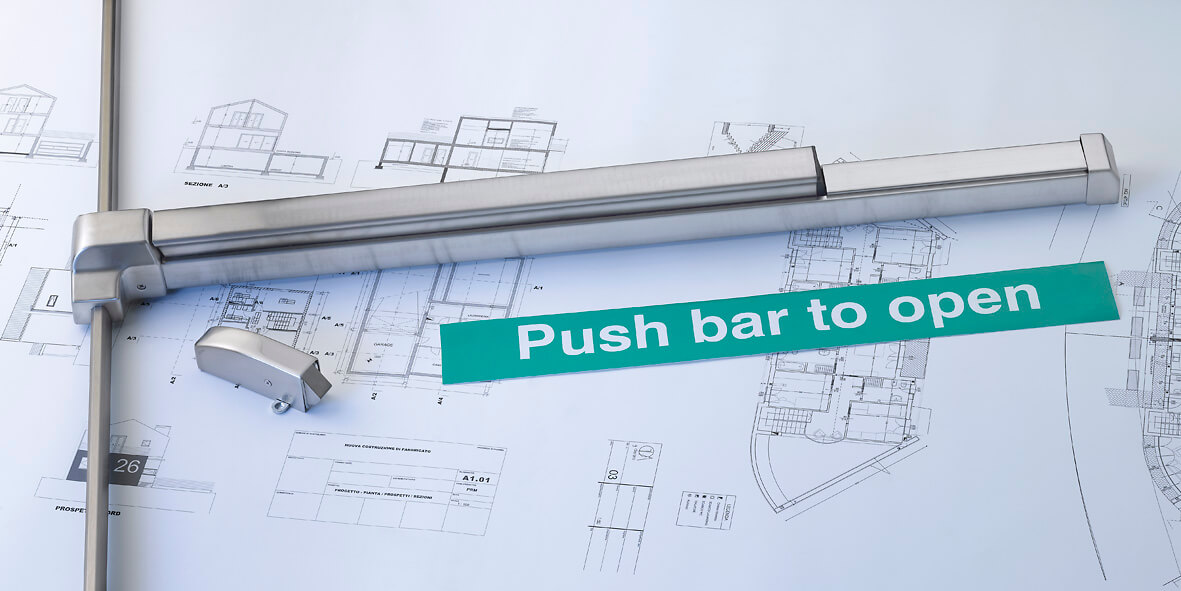Panic As Panic Doorsets Found Without Certs
The Office for Product Safety and Standards has found external panic or emergency exit doorsets have been supplied, conformity marked against EN...
Read Full Article
Rob Adams, technical manager at Arrone, a Hoppe brand, highlights some of the key considerations that must be made when it comes to panic and emergency exit hardware.
In an emergency, the evacuation of a building needs to be as simple as possible. It is essential that building users can open doors easily so that everyone can leave safely.
Architectural ironmongery plays a key role in helping with this. Rob Adams, technical manager at Arrone, a Hoppe brand, highlights some of the key considerations that must be made when it comes to panic and emergency exit hardware.
Panic or emergency exit hardware?
The building’s type, application, its occupation levels and where it is in the building must all be considered as to whether it is panic or emergency exit hardware that is required.
Emergency exit hardware is used when building users are familiar with exit routes, such as offices or warehouses and the building is not accessible to the general public. Devices for emergency exits could be a simple push pad type device or a lever handle that operates a mortice escape lock or nightlatch.
Panic
Panic hardware is used in buildings where members of the public have access to the building but may not be familiar with the exit routes, for example hotels or hospitals. This also applies to any building that has more than 60 people in it.
Any doors in areas that are accessible to the public must have a device fitted that is operable by a horizontal bar that covers at least 60% of the overall door width. As well as being easier to see and use from an accessibility point of view, it also adds another layer of safety functionality in the event of an emergency.
Performance standards
When it comes to panic or emergency exit hardware, there are two British and European Standards that specify the requirements for the manufacture, performance and testing of these particular products:
Both standards require the manufacturer’s name or trademark or other means of positive identification; an identification number of the certification body; and a CE mark with an additional UKCA mark from 30 June 2025, as things currently stand, to be visible on the product when fitted.
There are also markings which must be visible before fitting: the number and year of the European standard; the full classification code for the product; and the month and year of final assembly by the manufacturer (which can be in a coded form).
Security and accessibility
Any additional functions, such as enhanced security and accessibility, also need to be considered at specification stage as this will dictate the type of device needed.
From the outside
In commercial buildings, panic and emergency exit doors often need to be accessible from the outside too. For this, an Outside Access Device (OAD) is used. It can be locked to stop manual attack of the device and preventing illegal entry to the building.
Follow installation guidance
Not all panic and emergency exit hardware devices are the same. It is crucial that anyone installing this type of hardware reads the fitting instructions for each product and fits it as stated in the manufacturer instructions and guidance.
Get the guide
A pocket guide summarising everything you need to know about panic and emergency exit hardware is available to download from the Hoppe website.
Picture: Panic hardware has to go through thorough design and testing to ensure that it works when it absolutely has to.
Article written by Cathryn Ellis
11th September 2023